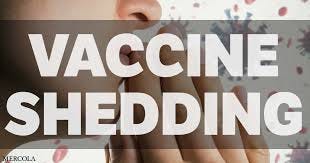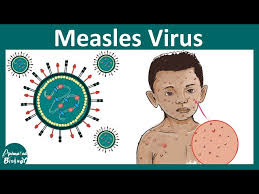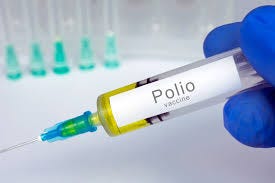Shedding From mRNA Covid Vaccines
Despite the fact checkers’ insistence that the covid vaccines don’t shed because they do not contain a live virus, Pfizer’s own documentation proves that they do (1). In the protocol relating to the Pfizer vaccine trials it states the following with regards to possible exposure to the vaccine during pregnancy-
EDP (Exposure during pregnancy) occurs when -
“A male participant who is receiving or has discontinued study intervention exposes a female partner to prior to or round the time of conception.”
“A female is found to be pregnant while being exposed or having been exposed to study intervention due to environmental exposure. Below are examples of environmental exposure during pregnancy:
“A female family member or health care provider reports that she is pregnant after having been exposed to the study intervention by inhalation or skin contact.”
“A male family member or healthcare provider who has been exposed to the study intervention by inhalation or skin contact then exposes his female partner prior to or around the time of conception.”
The term ‘study intervention’ means vaccine as is obvious when reading the protocol document.
It is clear from the above that -
- A vaccinated male can shed the vaccine contents to his partner via close contact.
- Even if a vaccinated person has left the trial, they can still expose others to the vaccine particles.
- An unvaccinated female can be contaminated by inhaling the particles via a vaccinated individual’s breath or by coming into physical contact with a vaccinated person.
- An unvaccinated male who has been exposed indirectly after coming into contact with a vaccinated person can then contaminate a third person, his female partner.

From what follows in the document, it is clear that Pfizer were concerned that mere secondary exposure to the vaccine could cause serious problems for the pregnant mother. The investigators have to follow the pregnancy through to its conclusion and note if there are any serious side effect such as ectopic pregnancy, spontaneous abortion, intrauterine foetal demise, neonatal death or congenital anomaly.
The protocol also makes it clear that the vaccine contents can be passed on through breastfeeding, not only if the mother has been vaccinated but even if she has been exposed via inhalation or skin contact.
In the case of the mRNA vaccines, no viral particles are transmitted because there is no actual virus in the vaccines. Instead, what is shed is the spike protein that is created by the body due to the instructions delivered via the mRNA in the vaccine and also the synthetic mRNA itself (2) (3).
When the virus from an attenuated vaccine is introduced, the body’s immune system should overcome it in a short space of time if the individual is not immunocompromised. However, in the case of the covid vaccines, the mRNA instructs the body to keep producing the pathogenic spike proteins for long periods meaning the vaccinated person is shedding for an increased length of time (4). Considering the devastating health effects these experimental shots have had, including myocarditis, blood clots, cancer and death, shedding creates a whole new level of danger to the public.
It isn’t just covid vaccines that shed. The phenomenon is associated with all live or attenuated vaccines and has been known for a long time in both veterinary circles and in the human medical field.
Animal vaccines
In 2014, the journal, ‘Vaccine, ‘published a study showing that pups recently vaccinated for parvo virus, shed the virus for up to 3 weeks after vaccination (5) -
“26 dogs were administered two commercial vaccines containing a CPV-2 or CPV-2b strain and monitored for 28 days after vaccination. By using real-time PCR, vaccine-induced viremia and shedding were found to be long lasting for both vaccinal strains. Vaccinal CPV-2b shedding was detected for a shorter period than CPV-2 (12 against 19 mean days) but with greater viral loads, whereas viremia occurred for a longer period (22 against 19 mean days) and with higher titers for CPV-2b.”
Interestingly, the study also stated that vaccinated dogs can still be infected.
The vaccine manufacturers themselves clearly state the ability of vaccines to shed. This is the data safety sheet for Nobivac, a kennel cough and parainfluenza
Vaccine (6) –
“Vaccinated animals can spread the B. bronchiseptica vaccine strain for six weeks and the canine parainfluenza vaccine strain for a few days after vaccination. “
Again, other animals can become ill due to the shedding, and not just dogs. It can affect other animal species. The data sheet continues –
“Cats, pigs and unvaccinated dogs may react to the vaccine strains with mild and transient respiratory signs.”
It gets worse. The shedding of the vaccine virus can also affect humans –
“Immunocompromised individuals should avoid any contact with the vaccine and vaccinated dogs up to six weeks after vaccination.”
So, if a dog owner with a weakened immune system vaccinates their dog, he or she can be adversely affected by vaccine shedding for up to 6 weeks afterwards. If there is a young baby, an elderly person, someone on chemotherapy or perhaps someone who has just had an operation, vaccinating the family dog can pose a health threat to these individuals.
Newcastle Disease can cause serious illness in poultry and other bird species. The vaccine for this disease can shed for up to 11 days after inoculation (7). It is also a zoonotic disease and can cause conjunctivitis in humans.
Vaccines for rabbits (8) and horses (9) are also known to shed. It is also common in cat vaccines such as that for panleukopenia, with the journal, ‘The Veterinary Record,’ admitting that -
“Shedding of field or vaccine virus DNA seems to be common in healthy cats which can be a concern in shelters and catteries. Diagnostic tools should be developed to facilitate differentiation of vaccine and field virus shedding (10).”
Moreover, numerous articles admit that attenuated live virus or bacterial vaccines can revert to virulence (11) (12). This means that the very act of vaccination is giving the animal the disease one was vaccinating against and any animal that gets infected via shedding could face the same problem.
However, it is not just live, attenuated vaccines that can cause problems, so can vaccines where the virus has supposedly been ‘killed’ because ‘killed’ viruses are not always properly inactivated. This was the case in an outbreak of avian flu in India in 2006. An article in the Indian publication FnBnews.com highlighted the probable cause -
“The killed vaccine will be received by the body as a foreign protein to produce antibody. Experts say that if the virus is not cultured properly in preparation of killed vaccine, the vaccine may generate live viruses in the new body to cause the original disease (13).”
An article published in 1987 concluded that most of the recent outbreaks of foot-and- mouth disease in Europe were caused by the vaccines themselves. Sixteen out of twenty-seven outbreaks were shown to be caused by vaccines that were inadequately inactivated by formaldehyde (14). As the vaccine can shed for up to 7 days (15), the disease can be passed on to other animals in close proximity including cattle, sheep, pigs, goats, deer and hedgehogs (16).
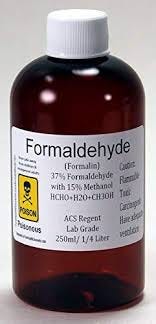
An article in, ‘Advancements in Veterinary Medicine,’ mentions another case of an improperly inactivated vaccine causing the death of 50% of the vaccinated farm animals (17).
In the 1960s and 1970s, there was an outbreak of Venezuelan equine encephalitis (VEE) that was, ‘thought to have originated from improperly inactivated equine vaccine strains as indicated by the fact that the epizootic strains are genetically almost identical to the vaccine strains (18)”
Being a zoonotic disease, if the VEE vaccine hasn’t been properly inactivated it can shed and spread to humans. VEE can have serious consequences if it infects the human population as evidenced in 1995 when 85,000 people contracted the illness in Venezuela and Colombia, resulting in 300 fatalities (18).
Leptospirosis is a serious disease caused by bacteria in rat urine. Unfortunately, the canine vaccine for it has one of the worst records for adverse effects including kidney failure, cancer, pancreatitis, arthritis and death (19). As this vaccine has been shown to shed bacteria for up to 56 weeks, it poses a significant health threat to other dogs (20). Moreover, being a zoonotic disease, it poses a threat to humans as well as noted by veterinarian, Patricia Jordan who has stated that she is familiar with cases of dog to human transmission via the vaccine (21).
So, whether the virus in the vaccine is attenuated or, supposedly inactivated, shedding can occur and result in serious health issues for both animals and humans.
A fact that not many people will be aware of is that the canine distemper virus is suspected of being one of the causes of Multiple Sclerosis (22) (23). In one study, 29% of MS patients had elevated levels of the distemper virus antibodies in their system (24).
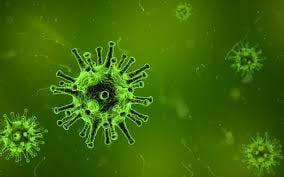
However, canine distemper is considered to be very rare (25) so it is impossible for this many people to have come into contact with a wild distemper virus. For example, there are approximately 130,000 MS sufferers in the UK (26). If 29% of them were infected that would mean 37,700 people would have had to come into contact with the wild distemper virus which is now hardly ever seen in dogs at all. However, at least 77% of dogs in the UK are regularly vaccinated (27). As there are approximately 13.5 million dogs in the U.K, that means 10.4 million are vaccinated annually (28) and can be shedding for up to 22 days (5), so it is obviously much more likely that these people contracted the vaccine strain virus and not the field virus. Irrespective of this, of course, a number of people with MS would be dog owners themselves meaning they would almost certainly have come into contact with a dog shedding the vaccine distemper virus.
Multiple Sclerosis is also linked to the measles virus. In one study it was discovered that people with MS were three times as likely to have a high measles antibody count as opposed to non-MS sufferers (29). Another study revealed that 75% of MS patients showed high levels of measles antibodies (30).
Again, measles is very rare. There were only 183 cases in 2023 in the U.K (31). In 2023 there were 3,476,510 children 5 years and younger (32). For that same age group, the measles vaccine coverage was 89.9% (33) meaning there were 3,125,382 children shedding the measles virus via vaccines as opposed to 83 with the wild strain (if we suppose that they were all unvaccinated). It is obvious, therefore, that the only way the majority of MS sufferers can come into contact with measles virus is via vaccine shedding.
However, there is even more to it than that. The measles virus and the distemper virus are extremely similar, both being morbilliviruses. Because of this, veterinary vaccine manufacturers have now made a combined distemper/measles vaccine that is sometimes given to dogs (34), which again, adds to potential shedding risk in relation to MS sufferers.
The threat of a veterinary vaccines causing humans in illness via shedding has been noted in the journal, ‘Clinical Infectious Diseases.’ In a 2003 article they wrote –
“The increased development and use of veterinary vaccines (including live vaccines), the increased aerosol administration of vaccines, and the increased proportion of individuals in the United States who are immunosuppressed and who may be exposed to these vaccines or to animals shedding the vaccine strains suggest that increased vigilance may be warranted (35).”
They suggested the following –
“Awareness of the potential for adverse events after exposure to animal vaccines or to animals vaccinated with a live vaccine should increase among physicians, and robust mechanisms of reporting, in addition to follow-up investigation, should be developed and implemented for suspected adverse events.”
Human vaccines
As with veterinary vaccines, there are numerous cases of human vaccines shedding and spreading disease to other individuals.
The measles vaccine seems to one of the main culprits. During a disease outbreak in New York in 2011, a person that had been vaccinated twice, went on to spread the disease to 84 other people with whom they had been in contact (36). Interestingly, the report says that the unvaccinated contacts all had a robust antibody response, disproving the fact that one must be vaccinated to be protected.
The shedding and transmission of measles virus from vaccinated humans is now well established. The Journal of Clinical Microbiology notes a study where many of those vaccinated against measles had the virus in their bodies up to 14 days after being vaccinated and the possibility that this may lead to the virus being shed into the environment –
“Overall, measles virus RNA was detected in 10 of 12 children during the 2-week sampling period. In some cases, measles virus RNA was detected as early as 1 day or as late as 14 days after vaccination. Measles virus RNA was also detected in the urine samples from all four of the young adults between 1 and 13 days after vaccination. This assay will enable continued studies of the shedding and transmission of measles virus (37).”
In an article in Paediatrics Child Health, it states-
“In the midst of a local measles outbreak, a recently immunized child was investigated for a new-onset measles-type rash. Nucleic acid testing identified that a vaccine-type measles virus was being shed in the urine (38). “
Another article in Eurosurveillance also commented on vaccinated individuals shedding the measles virus –
“We describe excretion of measles vaccine strain Schwarz in a child who developed a febrile rash illness eight days after primary immunisation against measles, mumps and rubella. Throat swabs and urine specimens were collected on the fifth and sixth day of illness, respectively. Genotyping demonstrated measles vaccine strain Schwarz (genotype A) (39).”
It isn’t just the measles component of the MMR vaccine that causes problems, In the same Eurosurveillance article they note that in 2008, 18 people contracted mumps from merely coming into contact with children who had been vaccinated with the MMR jab.
Polio vaccines also cause similar problems. An Egyptian study found a surprisingly high rate of shedding from infants that were vaccinated, and this was noted up to 28 days after vaccination (40). They also found evidence of children being infected by secondary contact with others vaccinated against the polio virus.
The Journal of Virology acknowledges that polio vaccines cause more virulent strains to spread through the population.
“Sabin strains used in the manufacture of oral polio vaccine (OPV) replicate in the human organism and can give rise to vaccine-derived polioviruses. The increased neurovirulence of vaccine derivatives has been known since the beginning of OPV use, but their ability to establish circulation in communities has been recognized only recently during the latest stages of the polio eradication campaign. This important observation called for studies of their emergence and evolution as well as extensive surveillance to determine the scope of this phenomenon (41).”
The shedding phenomenon related to the polio virus is now so prevalent that it is believed that nearly all outbreaks of polio are caused by the polio vaccine (42). In fact, the polio vaccine was responsible for one of the worst outbreaks of disease in the USA. It is known as the ‘Cutter Incident (43).’
In 1955 a vaccine manufacturer called Cutter laboratories, created a batch of vaccines for polio but failed to inactivate the polio virus properly. This resulted in 40,000 cases of polio. It must be remembered that as vaccines shed, it would not just be those injected that would become sick but also potentially the people in which they came into contact.
The problem with improperly inactivated vaccines has always been an issue for the vaccine manufacturers. According to the Nature Biotechnology the process of successfully and safely creating a Live Attenuated Vaccine is -
“Somewhat unpredictable and has not always been applicable. In the present regulatory environment, the use of LAVs has also been limited by safety concerns, including reversion to wild-type virulence. Because LAVs are shed from vaccinees, they sometimes present a risk to unvaccinated individuals with impaired immunity (44).”
The rotavirus is a very common virus that can cause diarrhoea in children and is not usually serious. The vaccine created to allegedly protect against it is Rota Teq, which is known to shed, the vaccine virus potentially being passed on to anyone in close contact with the vaccinee according to the manufacturer’s own literature (45). The journal, ‘Pediatrics’, mentions a case where a vaccinated infant shed the virus to an older sibling causing him to suffer from gastroenteritis that required emergency care (46). Gastroenteritis isn’t the only side effect of the vaccine though. Another one is intussusception, where the intestine partially collapses, which can prove fatal.
A study was carried out on another vaccine for rotavirus, Rotarix, and discovered that the vaccinated child contaminated an unvaccinated sibling in over 18% of cases (47).
The vaccine manufacturers are well aware of the shedding phenomenon. In the package insert for the Varivax chickenpox vaccine it clearly warns the public about this possibility -
“In rare circumstances, it is possible to catch chickenpox, including severe chickenpox, from a person who has been vaccinated with VARIVAX. This may occur in persons who have not previously been vaccinated or have not had chickenpox, as well as persons who fall into one of the following categories: - individuals with a weakened immune system. - pregnant women who have never had chickenpox. - newborn babies whose mothers have never had chickenpox (48).”
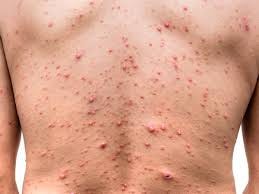
It goes on to warn anyone who recently received the vaccine to avoid close contact with anyone in the above categories for at least 6 weeks. Considering the side effects of the vaccine as noted in their own literature includes chickenpox, Guillain Barre Syndrome, seizures and the hideous Stevens-Johnson Syndrome which causes massive skin lesions all over the body and a 10% fatality rate, shedding is a very serious issue.
The manufacturers of the smallpox vaccine ACAM200 are equally explicit when it comes to the danger so shedding. Their package insert states -
“ACAM2000 vaccine contains a live vaccinia virus that can be spread to persons who have close contact with the person who receives the vaccine (vaccinee). The risks for the contacts are the same as they are for the vaccinees (49).”
So not only do the vaccinated pass on the virus to their relatives and friends but they also pass on the risk of an adverse reaction to those that have never even been vaccinated. This is extremely serious especially when you consider some of the potential side effects as mentioned by the manufacturers in their information sheet. These include myocarditis and pericarditis, encephalitis, encephalomyelitis, encephalopathy, progressive vaccinia, generalized vaccinia, severe vaccinial skin infections, erythema multiform major (including Stevens-Johnson syndrome), eczema vaccinatum resulting in permanent sequelae or death, ocular complications, blindness and foetal death.
The information sheet goes on to say that –
“These risks are increased in certain individuals and may result in severe disability, permanent neurological sequelae and/or death.”
The people who are at an increased risk of suffering these adverse reactions are people with cardiac disease, people with eye problems being treated with steroids, any immune deficiency disorder, people with eczema or other skin conditions, pregnant woman and infants under 12.
So, a vast swathe of the population is susceptible to the adverse reactions from shed smallpox vaccine-virus. In effect you, your child or your unborn child could become seriously ill or die by simply being in close proximity to someone who has been vaccinated with the smallpox vaccine.
Smallpox is no longer a health issue as it has been eradicated in most of the world so you may think it is not a big problem. However, the recent hysteria over monkey pox has made it relevant again as the smallpox vaccine is the one recommended to protect against monkeypox.
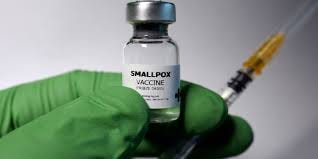
Shedding endangers everyone.
More people are becoming aware of the dangers of vaccines and are avoiding taken them but have not yet become informed about vaccine shedding. Vaccines are not just potentially dangerous for those receiving them but also for their friends, family members and pets. In fact, the shedding phenomenon has the potential to cause health problems for anyone, vaccinated or not.
References
1. New England Journal of Medicine, Safety and Efficacy of the BNT162b2 Covid-19 vaccine, https://www.nejm.org/doi/suppl/10.1056/NEJMoa2034577/suppl_file/nejmoa2034577_protocol.pdf
2. Kory, Pierre, Shedding" Part 5 - Evidence of Shedding Causing Illness In Others, https://tinyurl.com/ych27m6x
3. Texans for Vaccine Choice, Peter McCullough Exposes the Long Term Effect of Covid Vaccines, https://texansforvaccinechoice.com/peter-mccullough-exposes-the-long-term-effects-of-of-covid-vaccines/
4. Greatgameindia, New Study Detects Spike Protein in Vaccinated 6 Months After Covid-19 Vaccination, https://greatgameindia.com/new-study-detects-spike-protein-in-vaccinated-6-months-after-covid-19-vaccination/
5. Decaro, Nicola et al, Long-term viremia and fecal shedding in pups after modified-live canine parvovirus vaccination, https://www.sciencedirect.com/science/article/abs/pii/S0264410X1400588X?via%3Dihub
6. MSD Animal Health UK Limited, Nobivac, https://www.noahcompendium.co.uk/?id=-455455
7. Ayala, Andrea J et al, Experimental Infection and Transmission of Newcastle Disease Vaccine Virus in Four Wild Passerines, https://www.jstor.org/stable/27033076
8. Mayer, Joerg, Donnelly, Thomas M, Clinical Veterinary Advisor: Birds and Exotic Pets, https://tinyurl.com/mtp2m4t2
9. Robinson, Norman Edward, Sprayberry, Kim A, Current Therapy in Equine Medicine, https://tinyurl.com/mrb2jbf3
10. Bergmann, Michele et al, Faecal shedding of parvovirus deoxyribonucleic acid following modified live feline panleucopenia virus vaccination in healthy cats, https://pubmed.ncbi.nlm.nih.gov/31040216/
11. Lawhorn Bruce, Vaccines for Farrowing Operations, https://agrilife.org/victoriacountyagnr/files/2010/07/Vaccines-for-Farrowing-Operations.pdf
12. Chambers, Mark. A, Graham, Simon P, La Ragione, Roberto M, Challenges in Veterinary Vaccine Development and Immunization, https://www.ncbi.nlm.nih.gov/pmc/articles/PMC7123657/
13. FnBnews.com, Avian flu outbreak could be from improperly cultured VVND vaccine, suspect experts, https://www.fnbnews.com/Meat-Seafood/Avian-flu-outbreak-could-be-from-improperly-cultured-VVND-vaccine-suspect-experts
14. Beck, E, Strohmaier, K, Subtyping of European foot-and-mouth disease virus strains by nucleotide sequence determination, https://www.ncbi.nlm.nih.gov/pmc/articles/PMC254144/?page=8
15. Singh, Raj Kumar et al, Foot-and-Mouth Disease Virus: Immunobiology, Advances in Vaccines and Vaccination Strategies Addressing Vaccine Failures—An Indian Perspective, https://www.mdpi.com/2076-393X/7/3/90
16. Scottish Government, Foot and mouth disease: how to spot and report the disease, https://www.gov.scot/publications/foot-and-mouth-disease/
17. Roth, James A, Mechanistic Bases for Adverse Vaccine Reactions and Vaccine Failures, https://www.ncbi.nlm.nih.gov/pmc/articles/PMC7149317/
18. Scheld, Michael W, Whitley, Richard J, Marra, Christina M, Infections of the Central Nervous System, https://tinyurl.com/bdatcrwc
19. Dogs Naturally, Read this before you vaccinate for lepto, https://www.dogsnaturallymagazine.com/read-this-before-you-vaccinate-for-lepto/
20. Klaasen H L B m et al, Duration of immunity in dogs vaccinated against leptospirosis with a bivalent inactivated vaccine, https://pubmed.ncbi.nlm.nih.gov/12860082/
21. Jordan, Patricia, Leptospirosis In Dogs: Why the Vaccine Doesn’t Work, https://www.dogsnaturallymagazine.com/leptospirosis-vaccine-side-effects/
22. Hodge, Matthew J, Wolfson, Christina, Canine distemper virus and multiple sclerosis, https://tinyurl.com/bdxn4yd7
23. Rohowsky-Kochan, C, Dowling PC, Cook SD, Canine distemper virus-specific antibodies in multiple sclerosis, https://pubmed.ncbi.nlm.nih.gov/7543986/
24. Rohowsky-Kochan, c et al, Increased frequency of canine distemper virus‐specific antibodies in multiple sclerosis, https://www.ncbi.nlm.nih.gov/pmc/articles/PMC7821626/
25. Orchard Vets, Spotlight on Canine Distemper, https://tinyurl.com/pnfrebf7
26. Queens University Belfast, New treatment hope as world-first MS mega-trial opens site in Northern Ireland, https://tinyurl.com/4a27855v
27. Dunn, Derri, Why cats and dogs need booster shots, https://manypets.com/uk/articles/why-are-pet-vaccines-important/
28. UK Pet Food, UK Pet Population, https://tinyurl.com/mtjpbrva
29. Adams, John M, Measles antibodies in patients with multiple sclerosis, https://www.neurology.org/doi/abs/10.1212/WNL.17.7.707?journalCode=wnl
30. Reed, Dwayne et al, Sclerosis, https://tinyurl.com/3n4dv2u7
31. STV News, Why are Scotland's measles cases bucking the trend amid health warning? https://news.stv.tv/scotland/why-is-scotland-bucking-the-trend-of-rising-measles-cases-amid-world-health-warning
32. Unicef, How many children are there I the UK? https://data.unicef.org/how-many/how-many-children-under-18-are-there-in-the-uk/
33. Gov.UK, Quarterly vaccination coverage statistics for children age up to 5 years in the UK (COVER programme): April to June 2023 https://tinyurl.com/3xj8hsf6
34. Shwarzman Animal Medical Centre, Measles, distemper and how anti-vaccines movements are putting your pet at risk, https://tinyurl.com/bdeeap3p
35. Strausbaugh, Larry J, Berkelman, Ruth L, Human Illness Associated with Use of Veterinary Vaccines, https://academic.oup.com/cid/article/37/3/407/437242
36. Rosen, Jennifer B et al, Outbreak of measles among persons with prior evidence of immunity, New York City, 2011, https://pubmed.ncbi.nlm.nih.gov/24585562
37. Rota, PA et al, Detection of measles virus RNA in urine specimens from vaccine recipients, https://pubmed.ncbi.nlm.nih.gov/7494055/
38. Nestibo, Lindasy et al, Differentiating the wild from the attenuated during a measles outbreak, https://www.ncbi.nlm.nih.gov/pmc/articles/PMC3381670/
39. Kaic B et al, Spotlight on measles 2010: Excretion of vaccine strain measles virus in urine and pharyngeal secretions of a child with vaccine associated febrile rash illness, Croatia, March 2010, https://www.eurosurveillance.org/content/10.2807/ese.15.35.19652-en
40. Van Der Sanden, Sabine et al, Shedding of Vaccine Viruses with Increased Antigenic and Genetic Divergence after Vaccination of Newborns with Monovalent Type 1 Oral Poliovirus Vaccine, https://www.ncbi.nlm.nih.gov/pmc/articles/PMC2738206/
41. Cherkasova, EA et al, Spread of Vaccine-Derived Poliovirus from a Paralytic Case in an Immunodeficient Child: an Insight into the Natural Evolution of Oral Polio Vaccine, https://www.ncbi.nlm.nih.gov/pmc/articles/PMC538583/
42. AP News, More polio cases now caused by vaccine than by wild virus, https://apnews.com/article/health-united-nations-ap-top-news-pakistan-international-news-7d8b0e32efd0480fbd12acf27729f6a5
43. Fitzpatrick, Michael, The Cutter Incident: How America's First Polio Vaccine Led to a Growing Vaccine Crisis, https://www.ncbi.nlm.nih.gov/pmc/articles/PMC1383764/
44. Lauring, Adam S, Jones Jeremy O, Andina, Raul, Rationalizing the development of live attenuated virus vaccines, https://www.nature.com/articles/nbt.1635
45. FDA, Rota Teq, https://www.fda.gov/media/75718/download
46. Payne, Daniel C et al, Sibling Transmission of Vaccine-Derived Rotavirus (RotaTeq) Associated With Rotavirus Gastroenteritis, https://tinyurl.com/mxh8vxtz
47. GlaxoSmithKline, Rotarix, https://gskpro.com/content/dam/global/hcpportal/en_US/Prescribing_Information/Rotarix/pdf/ROTARIX-PI-PIL.PD
48. Medicines.Org, Varivax, Package leaflet: Information for the user, https://dwpgovuk-my.sharepoint.com/personal/stephen_mcmurray_dfcni_gov_uk/_layouts/15/onedrive.aspx?view=1
49. Health Canada, ACAM200, Smallpox Vaccine (Vaccinia Virus, live), https://pdf.hres.ca/dpd_pm/00073682.PDf

